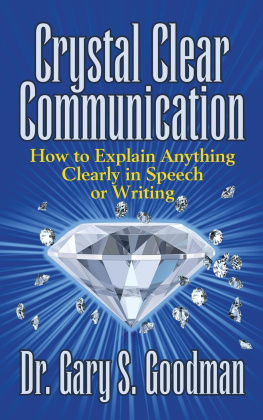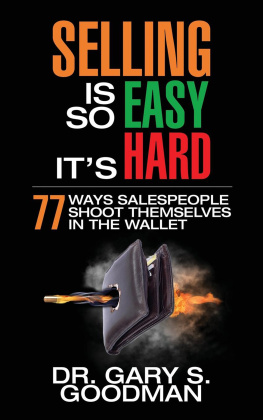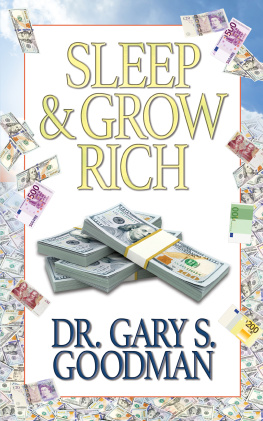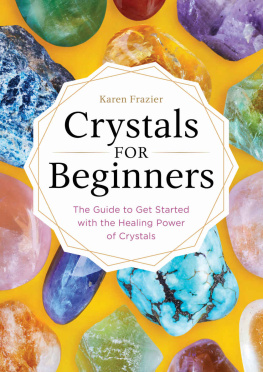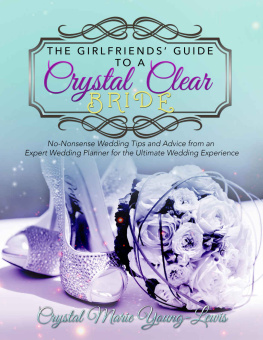
Crystal Clear Communication
Crystal Clear Communication
How to Communicate Anything Clearly in Speech and Writing
Dr. Gary S. Goodman

Published 2019 by Gildan Media LLC
aka G&D Media
www.GandDmedia.com
CRYSTAL CLEAR COMMUNICATION. Copyright 2019 by Dr. Gary S. Goodman. All rights reserved.
No part of this book may be used, reproduced or transmitted in any manner whatsoever, by any means (electronic, photocopying, recording, or otherwise), without the prior written permission of the author, except in the case of brief quotations embodied in critical articles and reviews. No liability is assumed with respect to the use of the information contained within. Although every precaution has been taken, the author and publisher assume no liability for errors or omissions. Neither is any liability assumed for damages resulting from the use of the information contained herein.
Front Cover design by David Rheinhardt of Pyrographx
Interior design by Meghan Day Healey of Story Horse, LLC
Library of Congress Cataloging-in-Publication Data is available upon request
ISBN: 978-1-7225-0192-1
eISBN: 978-1-7225-2291-9
10 9 8 7 6 5 4 3 2 1
Contents
Introduction and Overview
I m an optimist. I believe we can communicate clearly with nearly anyone.
Yes, it takes sustained effort, strategies, and techniques, and we have to overcome false starts, numerous distractions, and obstacles.
Occasionally, we have to face down prejudice, hostility, ignorance, and long odds. Our lives and careers might even be on the line.
But if were clear about what we wish to get across, and we learn enough about our audiences and then craft and deliver an excellent, comprehensible, and appealing message, were likely to succeed.
Let me tell you a story about someone who did just this.
In the early 1970s, with the Vietnam War still raging, Jim determined he was a conscientious objector.
War is wrong! he told himself, his family, and anyone that would listen.
Above all, he told this to his draft board, which had the solemn task of determining whether would-be holdouts such as Jim would be permitted to stay out of battle, serving instead in the medical corps or in civilian capacities identified as being in the nations interest.
There were several tests for conscientious objection, which survive to this day. An applicant for this status needs to demonstrate:
1. He is against all wars. He cant pick and choose the ones he agrees and disagrees with.
2. The objection needs to arise out of deeply felt religious or personal beliefs.
Although its not widely known, there is another criterion:
3. The candidate must demonstrate his sincerity not only in written documentation and in testimony before his draft board. Optimally, he should make a public declaration that he is opposed to war.
Knowledgeable people told Jim the odds against being granted conscientious-objector (CO) status were about 20 to 1. Typically, if you were denied, these were the options:
1. Enlist to avoid assignment to a war zone, violating your principles.
2. Refuse induction and go to federal prison for several years.
3. Flee to Canada or to another country that would grant asylum, renouncing your American citizenship.
Jim had faith he wouldnt have to resort to any of these dodges.
One day, he saw the now-infamous news photo of actress Jane Fonda posing in front of North Vietnamese artillery while wearing a military helmet.
His jaw dropped.
He wrote a letter to a major newspaper decrying her partisanship. His crystal clear message was simple and from the heart:
She says shes antiwar, but that means she cant take sides. As a conscientious objector, I know the difference. If youre antiwar, youre against all wars, period.
When he arrived at his draft board for his sincerity hearing several weeks later, the chairman said to his colleagues: I dont know if all of you have seen Jims letter to the editor about Jane Fonda, but you should. I think it speaks clearly and persuasively about his sincerity as a conscientious objector.
Jim was granted his CO status, and he served the country in a noncombatant role, earning an honorable discharge from the Army after eighteen months of duty.
When your life, your freedom, and your sincerity are on the line, you need a breakthrough in communication. You may have only one shot at getting your point across.
We also need to strive for crystal clear communications every day to address common challenges and opportunities in our personal lives and on the job. This is what this book aims to teach you to achieve.
Chapter One
Begin with a Crystal clear Mind
I ts one thing to urge you to create crystal clear communications, but what if you simply arent ready to get down to business?
Its very possible you havent quieted your mind to be in the proper mood to write or to speak effectively.
Possibly you havent truly clarified your intentions. What is my point? Do I have one main idea I want to express, or many? Which one(s) are critical?
Am I in the proper frame of mind to communicate, or am I preoccupied with something else? Am I bristling with defensiveness when I should be level-headed and dispassionate? Have I sufficiently thought through what I hope to convey clearly?
Maybe youre waiting too longprocrastinating.
A number of practical or psychological factors might also be blocking your path to achievement. If so, you cant be expected to roar down the highway of ideas without clearing the way.
If youre like most folks, you might be burdened by fears and anxieties. Often called writers block and stage fright, these and other widespread forms of communication apprehension might be keeping you from comfortably and clearly speaking out or composing your thoughts in writing.
According to Stanford research, fully 80 percent of Americans are shy in some circumstances. Shyness could be retarding your development. According to a much-quoted bestseller, The Book of Lists, speaking in public is a fear that most people rank above the fear of death!
So before we get into the dos and donts of crafting your message, shaping it for specific readers and listeners, making it solid, we need to make you solid, stripping away the concerns that even very gifted communicators have about how they come across.
Conquering State Fright
First, lets tackle stage fright. Stage fright, the fear of speaking in public or communicating verbally in someone elses immediate presence, afflicts millions of people.
Where does this fear come from? And what can we do about it?
There are several possible sources of speech apprehension. Well explore three of them:
Next page
